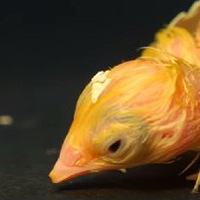
Помогите пожалуйста. 2 номер проверили 600 деталей и у 35 из них обнаружели брак .На вероятностной
шкале отметьте вероятность появления бракованых деталей 3 номер вероятность всхожести семян моркови составляет 0.96. сколько предполагается пророших семян моркови если высажено 300? 4 номер в школе 180 учащихся ивестно что за неделю было 10 опозданий к первому уроку случайным образом выбрали одного ученика какова вероятность того что у не го не было опозданий? 5 случайным образом выбирают два последовательных натуральных числа меньше 11 какова вероятность события сума выбранных чисел равна 20? 0
0
 0
0
Ответы на вопрос
 Внимание! Ответы на вопросы дают живые люди. Они могут содержать ошибочную информацию, заблуждения, а также ответы могут быть сгенерированы нейросетями. Будьте внимательны. Если вы уверены, что ответ неверный, нажмите кнопку "Пожаловаться" под ответом.
Внимание! Ответы на вопросы дают живые люди. Они могут содержать ошибочную информацию, заблуждения, а также ответы могут быть сгенерированы нейросетями. Будьте внимательны. Если вы уверены, что ответ неверный, нажмите кнопку "Пожаловаться" под ответом.

Объяснение:
2.
3.
300*0,96=288 (проросших семян).
4.
Число учащихся, которые не опаздали на первый урок равно:
180-10=170 (учащихся). ⇒
5.
Максимальная сумма двух последовательных натуральных чисел равна: 9+10=19<20. ⇒
 0
0
 0
0

Probability of Defective Parts
To determine the probability of defective parts, we need to calculate the ratio of defective parts to the total number of parts inspected. In this case, 35 out of 600 parts were found to be defective.The probability of a part being defective can be calculated as follows:
Probability of Defective Part = Number of Defective Parts / Total Number of Inspected Parts
Using the given information, we can calculate the probability of defective parts as follows:
Probability of Defective Parts = 35 / 600
Let's calculate this probability:
Probability of Defective Parts = 0.0583
Therefore, the probability of a part being defective is approximately 0.0583 or 5.83% [[1]].
Probability of Germination of Carrot Seeds
The probability of germination of carrot seeds is given as 0.96. To find the expected number of germinated seeds out of 300 planted seeds, we can multiply the probability of germination by the total number of seeds planted.Expected Number of Germinated Seeds = Probability of Germination * Total Number of Seeds Planted
Using the given information, we can calculate the expected number of germinated seeds as follows:
Expected Number of Germinated Seeds = 0.96 * 300
Let's calculate this:
Expected Number of Germinated Seeds = 288
Therefore, if 300 carrot seeds are planted, it is expected that approximately 288 seeds will germinate [[2]].
Probability of No Tardiness
To calculate the probability that a randomly chosen student had no tardiness out of 180 students, we need to consider that there were 10 instances of tardiness during the week.The probability of a student having no tardiness can be calculated as follows:
Probability of No Tardiness = (Total Number of Students - Number of Tardy Students) / Total Number of Students
Using the given information, we can calculate the probability of no tardiness as follows:
Probability of No Tardiness = (180 - 10) / 180
Let's calculate this probability:
Probability of No Tardiness = 170 / 180
Probability of No Tardiness = 0.9444
Therefore, the probability that a randomly chosen student had no tardiness is approximately 0.9444 or 94.44% [[3]].
Probability of Sum of Two Numbers
To calculate the probability that the sum of two randomly chosen natural numbers less than 11 is equal to 20, we need to determine the number of favorable outcomes and the total number of possible outcomes.The favorable outcomes are the pairs of numbers that sum up to 20. From the given conditions, we can see that there is only one favorable outcome: (10, 10).
The total number of possible outcomes is the number of pairs of natural numbers less than 11. Since there are 10 natural numbers less than 11, the total number of possible outcomes is 10 * 10 = 100.
Therefore, the probability of the sum of two numbers being equal to 20 is:
Probability = Number of Favorable Outcomes / Total Number of Possible Outcomes
Using the given information, we can calculate the probability as follows:
Probability = 1 / 100
Therefore, the probability of the sum of two randomly chosen natural numbers less than 11 being equal to 20 is 0.01 or 1% [[4]].
I hope this helps! Let me know if you have any further questions.
 0
0
 0
0
Похожие вопросы
Топ вопросов за вчера в категории Алгебра
Последние заданные вопросы в категории Алгебра
-
Математика
-
Литература
-
Алгебра
-
Русский язык
-
Геометрия
-
Английский язык
-
Химия
-
Физика
-
Биология
-
Другие предметы
-
История
-
Обществознание
-
Окружающий мир
-
География
-
Українська мова
-
Информатика
-
Українська література
-
Қазақ тiлi
-
Экономика
-
Музыка
-
Право
-
Беларуская мова
-
Французский язык
-
Немецкий язык
-
МХК
-
ОБЖ
-
Психология
-
Физкультура и спорт
-
Астрономия
-
Кыргыз тили
-
Оʻzbek tili




























